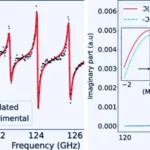NASA’s groundbreaking Ingenuity helicopter, the pioneering aircraft that defied expectations by taking flight on another world, has reached the end of its remarkable journey. After 72 successful flights in the rugged terrain of Jezero Crater on Mars, Ingenuity met its demise on January 18, 2024, marking the conclusion of nearly three years of exploration on the red planet.
Originally designed for five flights over a month, Ingenuity Helicopter surpassed all expectations by traversing 17 kilometers of Martian terrain and accumulating nearly 129 minutes of flight time. Constructed by NASA’s Jet Propulsion Laboratory in Pasadena, California, Ingenuity was a testament to the feasibility of powered flight in the thin atmospheres of distant worlds.
Lori Glaze, head of NASA’s planetary sciences division, lauded Ingenuity’s groundbreaking achievements, stating, “Ingenuity absolutely shattered our paradigm of exploration by introducing this new dimension of aerial mobility.”
While Ingenuity’s final flight ended prematurely due to a fatal incident, likely involving damage to its rotor blades, NASA announced on January 25 that its contributions to Martian science were invaluable. It provided insights into dust dynamics in the Martian atmosphere and served as a vital reconnaissance tool for NASA’s Perseverance rover, scouting the terrain ahead and aiding in identifying potential obstacles.
The lessons learned from Ingenuity’s mission will inform future endeavors in planetary exploration. NASA is already developing an eight-rotor helicopter for a mission to explore Saturn’s moon, Titan, while engineers are working on advanced helicopter designs for future Mars missions capable of carrying larger payloads and accessing previously inaccessible terrain features.
Ingenuity Helicopter’s final resting place atop an ancient river delta in Jezero Crater symbolizes the culmination of its collaborative mission with Perseverance, which continues to explore the crater’s geological history and search for signs of ancient Martian life.
With Perseverance having collected numerous rock and soil samples, NASA and the European Space Agency are poised to embark on the next phase of their mission: bringing these samples back to Earth for in-depth scientific analysis, albeit with a revamped plan following cost estimates reaching up to $11 billion.
The legacy of Ingenuity’s historic mission will endure as a testament to human Ingenuity and the spirit of exploration that drives scientific discovery beyond the confines of Earth.










